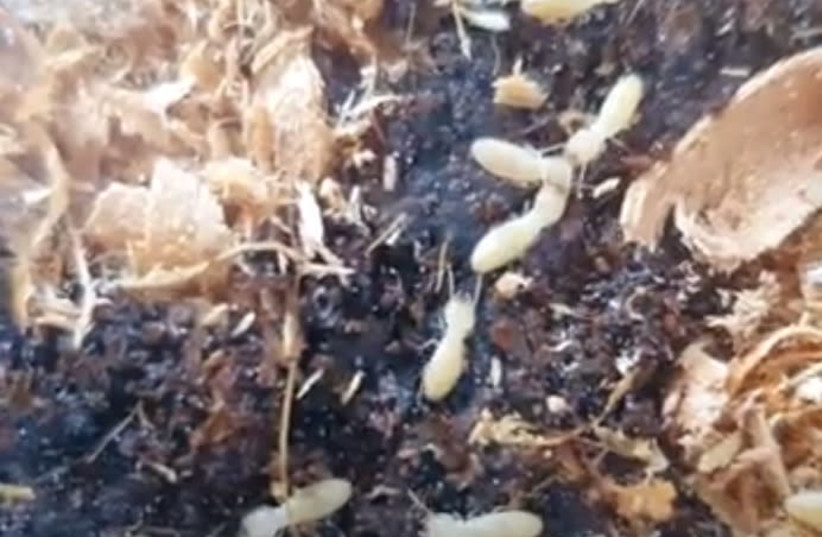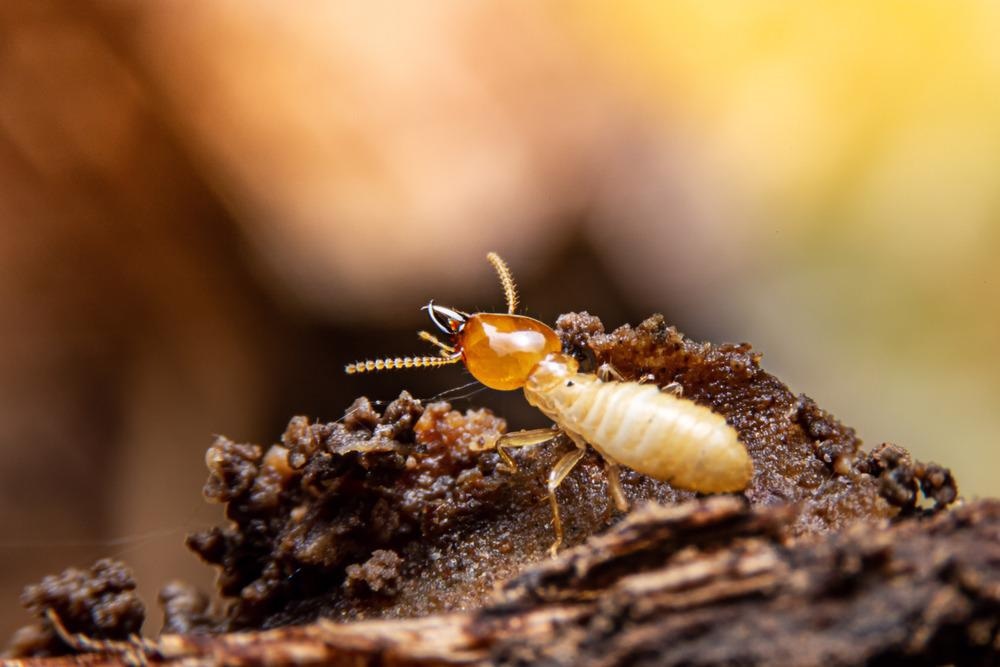Stankowich, T., Haverkamp, P. J. & Caro, T. Ecological drivers of antipredator defenses in Carnivores. Evolution 68, 1415–1425 (2014).
Sugiura, S. Predators as drivers of insect defenses. Entomol. Sci. 23, 316–337 (2020).
Beauchamp, G. Animal Vigilance—Monitoring Predators And Competitors. p. 254 (Elsevier, 2015).
Hollén, L. I. & Radford, A. N. The development of alarm call behaviour in mammals and birds. Anim. Behav. 78, 791–800 (2009).
Gill, S. & Bierema, A. M.-K. On the meaning of alarm calls: a review of functional reference in avian alarm calling. Ethology 119, 449–461 (2013).
Blumstein, D. T. Rodent Societies: An Ecological & Evolutionary Perspective (eds. J. O. Wolff & P. W. Sherman) pp. 317–327. (University of Chicago Press, 2007).
Snowdon, C. T. Vervet monkey alarm calls: setting the historical context. Anim. Behav. Cogn. 7, 87–94 (2020).
Hamilton, W. D. The genetical evolution of social behaviour. J. Theor. Biol. 7, 1–52 (1964).
Google Scholar
Smith, J. M. The evolution of alarm calls. Am. Nat. 99, 59–63 (1965).
Taylor, R. J., Balph, D. F. & Balph, M. H. The evolution of alarm calling: a cost-benefit analysis. Anim. Behav. 39, 860–868 (1990).
Hermann, H. R. Defensive Mechanisms in Social Insects. p. 259 (Praeger Publishers, 1984).
Stern, D. L. & Foster, W. A. The evolution of soldiers in aphids. Biol. Rev. 71, 27–79 (1996).
Google Scholar
Smith, R. J. F. Alarm signals in fishes. Rev. Fish. Biol. Fish. 2, 33–63 (1992).
Klump, G. M. & Shalter, M. D. Acoustic behaviour of birds and mammals in the predator context; I. Factors affecting the structure of alarm signals. II. The functional significance and evolution of alarm signals. Z. Tierpsychol. 66, 189–226 (1984).
Caro, T. Antipredator Defenses in Birds and Mammals. p. 592 (University of Chicago Press, 2005).
Seyfarth, R. M., Cheney, D. L. & Marler, P. Monkey responses to three different alarm calls: Classification and semantic communication. Science 210, 801–803 (1980).
Google Scholar
Wyatt, T. D. Pheromones and Animal Behaviour. p. 391 (Cambridge University Press, 2003).
Hill, P. S. M. Vibrational Communication in Animals. p. 272 (Harvard, Cambridge, 2008).
Hill, P. S. M. Biotremology: We fight for food. Curr. Biol. 29, R209–R212 (2019).
Google Scholar
Cocroft, R. B. & Rodríguez, R. L. The behavioral ecology of insect vibrational communication. BioScience 55, 323–334 (2005).
Kettler, R. & Leuthold, R. H. Inter- and intraspecific alarm response in the termite Macrotermes subhyalinus (Rambur). Insectes Soc. 42, 145–156 (1995).
Hölldobler, B., Braun, U., Gronenberg, W., Kirchner, W. H. & Peeters, C. Trail communication in the ant Megaponera foetens (Fabr.) (Formicidae, Ponerinae). J. Insect Physiol. 40, 585–593 (1994).
Hunt, J. H. & Richard, F.-J. Intracolony vibroacoustic communication in social insects. Insectes Soc. 60, 403–417 (2013).
Howse, P. E. The perception of vibration by the subgenual organ in Zootermopsis angusticollis Emerson and Periplaneta americana L. Experientia 18, 457–458 (1962).
Golden, T. M. J. & Hill, P. S. M. The evolution of stridulatory communication in ants, revisited. Insectes Soc. 63, 309–319 (2016).
Šobotník, J., Hanus, R. & Roisin, Y. Agonistic behavior of the termite Prorhinotermes canalifrons (Isoptera: Rhinotermitidae). J. Insect Behav. 21, 521–534 (2008).
Delattre, O. et al. Complex alarm strategy in the most basal termite species. Behav. Ecol. Sociobiol. 69, 1945–1955 (2015).
Krausa, K., Hager, F. A., Kiatoko, N. & Kirchner, W. H. Vibrational signals of African stingless bees. Insectes Soc. 64, 415–424 (2017).
Rosengaus, R., Jordan, C., Lefebvre, M. & Traniello, J. F. A. Pathogen alarm behavior in a termite: a new form of communication in social insects. Naturwissenschaften 86, 544–548 (1999).
Google Scholar
Evans, T. A. et al. Termites assess wood size by using vibration signals. Proc. Natl Acad. Sci. USA 102, 3732–3737 (2005).
Google Scholar
Evans, T. A. et al. Termites eavesdrop to avoid competitors. Proc. R. Soc. B 276, 4035–4041 (2009).
Blum, M. S. Comprehensive Insect Physiology, Biochemistry and Pharmacology: Behavior, Vol. 9 (eds. G. A. Kerkut & L. I. Gilbert), pp. 193–224 (Pergamon Press, 1985).
Verheggen, F. J., Haubruge, E. & Mescher, M. C. Alarm pheromones—Chemical signaling in response to danger, Editor(s): Gerald Litwack. Vitam. Horm. 83, 215–239 (2010).
Google Scholar
Šobotník, J., Jirošová, A. & Hanus, R. Chemical warfare in termites. J. Insect Physiol. 56, 1012–1021 (2010).
Eisner, T., Kriston, I. & Aneshansley, D. J. Defensive behavior of a termite (Nasutitermes exitiosus). Behav. Ecol. Sociobiol. 1, 83–125 (1976).
Šobotník, J. et al. (E,E)-α-Farnesene, an alarm pheromone of the termite Prorhinotermes canalifrons. J. Chem. Ecol. 34, 478–486 (2008).
Leonhardt, S. D., Menzel, F., Nehring, V. & Schmitt, T. Ecology and evolution of communication in social insects. Cell 164, 1277–1287 (2016).
Google Scholar
Wilson, E. O. & Regnier, F. E. Jr The evolution of the alarm-defense system in the formicine ants. Am. Nat. 105, 279–289 (1971).
Bradshaw, J. W. S., Baker, R. & Howse, P. E. Multicomponent alarm pheromones of the weaver ant. Nature 258, 230–231 (1975).
Google Scholar
Norman, V. C., Butterfield, T., Drijfhout, F., Tasman, K. & Hughes, W. O. Alarm pheromone composition and behavioral activity in fungus-growing ants. J. Chem. Ecol. 43, 225–235 (2017).
Google Scholar
Prestwich, G. D. Defense Mechanisms of Termites. Annu. Rev. Entomol. 29, 201–232 (1984).
Google Scholar
Bell, W. J., Roth, L. M. & Nalepa, C. A. Cockroaches: Ecology, Behavior, and Natural History. p. 247 (The Johns Hopkins University Press, 2007).
Evans, D. A., Baker, R., Briner, P. H. & McDowell, P. G. Defensive secretions of some African termites. Proceedings of the International Congress of the International Union for the Study of Social Insects (1977).
Anderson, M. The evolution of eusociality. Annu. Rev. Ecol. Syst. 15, 165–189 (1984).
Stern, D. L. A phylogenetic analysis of soldier evolution in the aphid family Hormaphididae. Proc. R. Soc. B 256, 203–209 (1994).
Google Scholar
Bourke, A. F. Behavioural Ecology: An Evolutionary Approach, 4th ed. (eds. J. R. Krebs & N. B. Davies) pp. 203–227. (Blackwell Publishing, 1997).
Deligne, J., Quennedey, A. & Blum, M. S. Social Insects (ed. H. R. Hermann) p. 1–76 (Academic Press, 1981).
Bignell, D. E. The Mechanistic Benefits of Microbial Symbionts, Advances in Environmental Microbiology (ed. C. J. Hurst), p. 121–172. (Springer, 2016).
Bar-On, Y. M., Phillips, R. & Milo, R. The biomass distribution on Earth. Proc. Natl Acad. Sci. USA 115, 6506–6511 (2018).
Google Scholar
Tuma, J., Eggleton, P. & Fayle, T. M. Ant-termite interactions: an important but under-explored ecological linkage. Biol. Rev. 95, 555–572 (2020).
Noirot, C. & Pasteels, J. M. Ontogenetic development and evolution of the worker caste in termites. Experientia 43, 851–860 (1987).
Prestwich, G. D., Bierl, B. A., Devilbiss, E. D. & Chaudhury, M. F. B. Soldier frontal glands of the termite Macrotermes subhyalinus: Morphology, chemical composition, and use in defense. J. Chem. Ecol. 3, 579–590 (1977).
Google Scholar
Waller, D. A. & La Face, J. P. Unpalatability as a passive defense of Coptotermes formosanus Shiraki soldiers against ant predation. J. Appl. Entomol. 103, 148–153 (1987).
Quennedey, A. Defensive Mechanisms in Social Insects (ed. H. R. Hermann) p. 151–200. (1984)
Kuan, K.-C., Chiu, C. I., Shih, M.-C., Chi, K.-J. & Li, H.-F. Termite’s twisted mandible presents fast, powerful, and precise strikes. Sci. Rep. 10, 9462 (2020).
Google Scholar
Šobotník, J. et al. Explosive backpacks in old termite workers. Science 337, 436 (2012).
Bourguignon, T. et al. Molecular mechanism of the two-component suicidal weapon of Neocapritermes taracua old workers. Mol. Biol. Evol. 33, 809–819 (2016).
Google Scholar
Wilson, E. O. The Insect Societies (Harvard University Press, 1971).
Roisin, Y., Everaerts, C., Pasteels, J. M. & Bonnard, O. Caste-dependent reactions to soldier defensive secretion and chiral alarm/recruitment pheromone in Nasutitermes princeps. J. Chem. Ecol. 16, 2865–2875 (1990).
Google Scholar
Connétable, S., Robert, A., Bouffault, F. & Bordereau, C. Vibratory alarm signals in two sympatric higher termite species: Pseudacanthotermes spiniger and P. militaris (Termitidae, Macrotermitinae). J. Insect Behav. 12, 329–342 (1999).
Lubin, Y. D. & Montgomery, G. G. Defenses of Nasutitermes termites (Isoptera, Termitidae) against Tamandua anteaters (Edentata, Myrmecophagidae). Biotropica 13, 66–76 (1981).
Hölldobler, B. & Wilson, E. O. The Ants (Harvard University Press, 1990).
Moore, B. P. Studies on the chemical composition and function of the cephalic gland secretion in Australian termites. J. Insect Physiol. 14, 33–39 (1968).
Google Scholar
Maschwitz, U. & Mühlenberg, M. Chemische Gefahrenalarmierung bei einer Termite. Sci. Nat. 59, 516–516 (1972).
Vrkoč, J., Křeček, J. & Hrdý, I. Monoterpenic alarm pheromones in two Nasutitermes species. Acta Entomol. Bohemoslov. 75, 1–8 (1978).
Röhrig, A., Kirchner, W. H. & Leuthold, R. H. Vibrational alarm communication in the African fungus-growing termite genus Macrotermes (Isoptera, Termitidae). Insectes Soc. 46, 71–77 (1999).
Reinhard, J. & Clément, J.-L. Alarm reaction of European Reticulitermes termites to soldier head capsule volatiles (Isoptera, Rhinotermitidae). J. Insect Behav. 15, 95–107 (2002).
Cristaldo, P. F. et al. The nature of alarm communication in Constrictotermes cyphergaster (Blattodea: Termitoidea: Termitidae): the integration of chemical and vibroacoustic signals. Biol. Open 4, 1649–1659 (2015).
Google Scholar
Delattre, O. et al. Chemical and vibratory signals used in alarm communication in the termite Reticulitermes flavipes (Rhinotermitidae). Insectes Soc. 66, 265–272 (2019).
Krishna, K., Grimaldi, D. A., Krishna, V. & Engel, M. S. Treatise on the Isoptera of the world. Bull. Am. Mus. Nat. Hist. 377, 1–2407 (2013).
Howse, P. E. On the significance of certain oscillatory movements of termites. Insectes Soc. 12, 335–345 (1965).
Stuart, A. M. Studies on the communication of alarm in the termite Zootermopsis nevadensis (Hagen), Isoptera. Physiol. Zool. 36, 85–96 (1963).
Šobotník, J., Bourguignon, T., Hanus, R., Weyda, F. & Roisin, Y. Structure and function of defensive glands in soldiers of Glossotermes oculatus (Isoptera: Serritermitidae). Biol. J. Linn. Soc. 99, 839–848 (2010).
Farine, J.-P. et al. The defensive secretion of Eurycotis floridana (Dictyoptera, Blattidae, Polyzosteriinae): chemical identification and evidence of an alarm function. Insect Biochem. Mol. Biol. 27, 577–586 (1997).
Google Scholar
Farine, J.-P. et al. Defensive secretion of Therea petiveriana: Chemical identification and evidence of an alarm function. J. Chem. Ecol. 28, 1629–1640 (2002).
Google Scholar
Brossut, R. Allomonal secretions in cockroaches. J. Chem. Ecol. 9, 143–158 (1983).
Google Scholar
Noirot, C. Biology of Termites (eds. K. Krishna, F. M. Weesner), p. 89–123. (Academic Press, 1969).
Neoh, K.-B., Yeap, B.-K., Tsunoda, K., Yoshimura, T. & Lee, C.-Y. Do termites avoid carcasses? Behavioral responses depend on the nature of the carcasses. PLoS ONE 7, e36375 (2012).
Google Scholar
Sun, Q., Hampton, J. D., Merchant, A., Haynes, K. F. & Zhou, X. Cooperative policing behaviour regulates reproductive division of labour in a termite. Proc. R. Soc. B 287, 20200780 (2020).
Lenz, M. Caste Differentiation in Social Insects (eds. J. A. L. Watson, B. M. Okot-Kotber, C. Noirot), p. 125–145. (Pergamon Press, 1985).
Stuart, A. M. The determination and regulation of the neotenic reproductive caste in the lower termites (Isoptera): with special reference to the genus Zootermopsis (Hagen). Sociobiology 4, 223–237 (1979).
Bourguignon, T. et al. The evolutionary history of termites as inferred from 66 mitochondrial genomes. Mol. Biol. Evol. 32, 406–421 (2015).
Google Scholar
Buček, A. et al., Evolution of termite symbiosis informed by transcriptome-based phylogenies. Curr. Biol. 29 (2019).
Shellman-Reeve, J. S. The Evolution of Social Behaviour in Insects and Arachnids. (eds. B. J. Crespi, J. C. Choe), p. 52–93. (Cambridge University Press, 1997)
Seelinger, G. & Seelinger, U. On the social organisation, alarm and fighting in the primitive cockroach Cryptocercus punctulatus Scudder. Z. Tierpsychol. 61, 315–333 (1983).
Maistrello, L. & Sbrenna, G. Behavioural differences between male and female replacement reproductives in Kalotermes flavicollis (Isoptera, Kalotermitidae). Insectes Soc. 46, 186–191 (1999).
Maistrello, L. & Sbrenna, G. Frequency of some behavioural patterns in colonies of Kalotermes flavicollis (Isoptera Kalotermitidae): the importance of social interactions and vibratory movements as mechanisms for social integration. Ethol. Ecol. Evol. 8, 365–375 (1996).
Whitman, J. G. & Forschler, B. T. Observational notes on short-lived and infrequent behaviors displayed by Reticulitermes flavipes (Isoptera: Rhinotermitidae). Ann. Entomol. Soc. Am. 100, 763–771 (2007).
Ruhland, F., Moulin, M., Choppin, M., Meunier, J. & Lucas, C. Reproductives and eggs trigger worker vibration in a subterranean termite. Ecol. Evol. 10, 5892–5898 (2020).
Stuart, A. M. Preliminary studies on the significance of head-banging movements in termites with special reference to Zootermopsis angusticollis (Hagen) (Isoptera: Hodotermitidae). Sociobiology 14, 49–60 (1988).
Noirot, C. Biology of Termites (eds. K. Krishna, F. Weesner) Vol. 2, p. 73–125 (Academic Press, 1970).
Aguilera-Olivares, D., Palma-Onetto, V., Flores-Prado, L., Zapata, V. & Niemeyer, H. M. X-ray computed tomography reveals that intraspecific competition promotes soldier differentiation in a one-piece nesting termite. Entomol. Exp. Appl. 163, 26–34 (2017).
King, E. G. & Spink, W. T. Foraging galleries of the Formosan subterranean termite, Coptotermes formosanus, in Louisiana. Ann. Entomol. Soc. Am. 62, 536–542 (1969).
Valterová, I., Vrkoč, J., Lindström, M. & Norin, T. On the natural occurrence of (-)-3-carene, a component of termite defense secretions. Sci. Nat. 79, 416–417 (1992).
Nutting, W. L. Colonizing flights and associated activities of termites. I. The desert damp-wood termite Paraneotermes simplicicornis (Kalotermitidae). Psyche 73, 131–149 (1966).
Mizumoto, N. & Bourguignon, T. Modern termites inherited the potential of collective construction from their common ancestor. Ecol. Evol. 10, 6775–6784 (2020).
Sands, W. A. The soldierless termites of Africa. Bull. Br. Mus. Nat. Hist. (Suppl.) 18, 1–244 (1972).
Ahmad, M. The soldierless termite genera of the Oriental region, with a note on their phylogeny (Isoptera: Termitidae). Pak. J. Zool. 8, 105–123 (1976).
Miller, L. R. Invasitermes, a new genus of soldierless termites from northern Australia (Isoptera: Termitidae). J. Aust. Entomol. Soc. 23, 33–37 (1984).
Šobotník, J. et al. The frontal gland in workers of Neotropical soldierless termites. Naturwissenschaften 97, 495–503 (2010).
Chouvenc, T., Šobotník, J., Engel, M. S. & Bourguignon, T. Termite evolution: mutualistic associations, key innovations, and the rise of Termitidae. Cell. Mol. Life Sci. 78, 2749–2769 (2021).
Google Scholar
Hermann, H. R. & Blum, M. S. Social Insects (ed. H. R. Hermann) Vol. 2, pp 77–197 (Academic Press, 1981).
Buschinger, A., Maschwitz, U. Defensive Mechanisms In Social Insects (ed. H. R. Hermann), p. 95–150 (Praeger, 1984).
Schönrogge, K., Barbero, F., Casacci, L. P., Settele, J. & Thomas, J. A. Acoustic communication within ant societies and its mimicry by mutualistic and socially parasitic myrmecophiles. Anim. Behav. 134, 249–256 (2017).
Lo, N. et al. Evidence from multiple gene sequences indicates that termites evolved from wood-feeding cockroaches. Curr. Biol. 10, 801–804 (2000).
Google Scholar
Inward, D., Beccaloni, G. & Eggleton, P. Death of an order: a comprehensive molecular phylogenetic study confirms that termites are eusocial cockroaches. Biol. Lett. 3, 331–335 (2007).
Google Scholar
Haverty, M. I. The proportion of soldiers in termite colonies: a list and a bibliography. Sociobiology 2, 199–216 (1977).
Miramontes, O. & DeSouza, O. The nonlinear dynamics of survival and social facilitation in termites. J. Theor. Biol. 181, 373–380 (1996).
Bourguignon, T. et al. Mitochondrial phylogenomics resolves the global spread of higher termites, ecosystem engineers of the tropics. Mol. Biol. Evol. 34, 589–597 (2017).
Google Scholar
Donovan, S. E., Eggleton, P. & Bignell, D. E. Gut content analysis and a new feeding group classification of termites. Ecol. Entomol. 26, 356–366 (2001).
Maddison, W. P. & Maddison, D. R. Mesquite: A Modular System For Evolutionary Analysis http://mesquiteproject.org (2019).
Holm, S. A simple sequentially rejective multiple test procedure. Scand. J. Stat. 6, 65–70 (1979).
Maddison, W. P. Testing character correlation using pairwise comparisons on a phylogeny. J. Theor. Biol. 202, 195–204 (2000).
Google Scholar
Maddison, W. P. & FitzJohn, R. G. The unsolved challenge to phylogenetic correlation tests for categorical characters. Syst. Biol. 64, 127–136 (2015).








